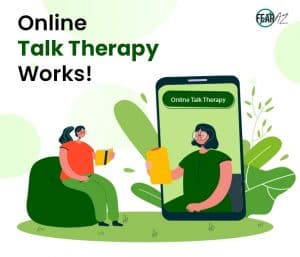Share This Article
The Fear of Belly Buttons, Rare but Real
Do you wake up feeling disgust when thinking about belly buttons?
Does going to the beach worry you? Maybe you avoid going anywhere where you might be exposed to belly buttons.
Do you feel disgust or anxiety when someone wears risqué clothing showing their belly button? If the answer to any of these questions is a yes, then you are most likely suffering from omphalophobia.
Omphalophobia is the fear of belly buttons or navels.
Not everyone likes to look at belly buttons or human navels. However, there are some who face dread while seeing or even thinking about looking at a belly button. If you have omphalophobia, it’s likely you feel overwhelmed when you look at a navel. Shivering, sweating profusely, dry mouth, shortness of breath, and tightness in the chest are all common symptoms faced by those who have omphalophobia.
Is omphalophobia common? Unlike many phobias, omphalophobia is not common. Because of this, you might feel that you can’t discuss your phobia with others. This inability to share your fears might lead to social isolation and in some cases, depression.
Did You Know?
The medical name for a belly button is umbilicus.

What Is Omphalophobia All About?
Although omphalophobia can be considered an irrational fear, there are ways to treat it. As a matter of fact, with a little work one can learn to better manage this phobia, and perhaps even overcome it completely. The first step toward that goal is to understand why you have it.
Let’s explore what omphalophobia is, its symptoms, and the various treatments available to treat it.
The word “omphalophobia” is a combination of the Greek words omphalo meaning “navel” and phobos, meaning “fear.” It is defined as the “fear of navels.” Omphalophobia is a specific phobia, meaning that these types of phobias cause extreme and persistent fear in those faced with a particular situation or object.
What Causes Omphalophobia?
There are various reasons why you might have omphalophobia and others may not. Let’s take a look at some of the possible causes of omphalophobia:
Childhood Injury
Children are fascinated with the different parts of their bodies and want to know more about them. The navel is no exception. Some children might poke their belly buttons while playing with them, which in turn, can hurt them. Hence, they might dread looking at or touching their navel again for fear of injuring themselves.
Its Delicate Nature
Some people may notice that their belly buttons are dark or have dirt in them. They might then try to clean it using sharp objects, hurting themselves in the process. The fact that there was dirt in their navels or that they hurt themselves may then create feelings of fear and disgust. Those who experience this might not want to look at their navel again.
Presence of Umbilical Cord in the Navel
For some, omphalophobia might be triggered by the fact that a small section of the umbilical cord may have remained in their navel at birth. Because of this, even thinking about belly buttons can trigger feelings of anxiety and disgust in them.
Physical/Sexual Abuse
Those who might have been inappropriately touched at the navel in the past may have symptoms of omphalophobia. Now, seeing or thinking about belly buttons brings forth a lot of unpleasant memories for them. Some might deliberately find ways to avoid thinking or looking at belly buttons or avoid going to places where they believe they might be exposed to others’ navels.
Vicarious Conditioning
In some cases, vicarious conditioning may also trigger omphalophobia. Vicarious conditioning implies a type of learning where an individual develops fear or dread of something after looking at someone else suffering with a problem. For example, you might develop a fear of belly buttons if you’ve known someone who perhaps has a navel deformity, navel injury, or navel pain.
Similar to other phobias, the onset of omphalophobia generally begins in childhood, particularly after a negative or traumatic experience. However, some might also develop omphalophobia due to a predisposition to anxiety or family history where members of a family have suffered from omphalophobia.
Symptoms of Omphalophobia
After the onset of omphalophobia, symptoms may last for at least six months. Let us take a look at the mental, emotional, and physical symptoms of omphalophobia.
Mental/Emotional Symptoms
- Panic attacks
- Difficulty concentrating
- Inability to relax or calm down
- Becoming easily triggered or irritated at small things
- Avoidance
- Interference with daily activities
Physical Symptoms
- Trembling
- Excessive sweating
- Dry mouth
- Shortness of breath
- Tightness in chest
- Increase in heartbeat
- Upset stomach
- Nausea
Not all those who suffer from omphalophobia experience all symptoms listed here. Some people may only have a few symptoms while others may experience all the symptoms depending upon their past experiences and exposure to belly buttons.
Self-Help: What Can I Do to Help Myself?
Omphalophobia, or the fear of belly buttons, doesn’t affect many. As a result, those struggling with this phobia may feel unable to openly discuss their fear or seek help. If you prefer to undertake omphalophobia treatment on your own versus seeking professional help, there are several self-help techniques you can rely on to help you better manage your fear of belly buttons.
- Deep breathing.
- Muscle relaxation techniques to help you relax your body and mind. One of the most effective techniques is Jacobson’s relaxation technique that focuses on tightening and relaxing specific muscle groups in sequence.
- Mindfulness techniques such as yoga, guided meditation, or pursuing creative hobbies.
- Seeking out support groups of those with phobias.
- You can also begin to slowly expose yourself more to belly buttons in an effort to increase your tolerance and reduce your reactions.
Professional Help for Omphalophobia
If self-help techniques aren’t effective, it may be time to seek professional help. There are many treatment options available to you. Below you’ll find two such options which can help you overcome omphalophobia. Read on to discover what these techniques are all about.
Cognitive Behavioral Therapy (CBT)
With CBT, you can learn to overcome your phobia of belly buttons by learning to think about belly buttons in a different way. A licensed therapist will guide you through the treatment process. This technique helps you learn to react differently towards navels. CBT is a short-term technique that focuses on your omphalophobia by equipping you with certain tools to help you better manage your fear.
Exposure Therapy
Exposure therapy, also known as systematic desensitization, is a specific type of CBT in which your therapist will gradually expose you to the object of your phobia—belly buttons—while helping you take control of your fear. In this technique, the therapist may show you images of belly buttons, in the hope that it will reduce your fear and increase your confidence in managing it.
How to Avoid Omphalophobia Altogether
If you want to avoid confronting your fear of belly buttons altogether, then you should find ways to avoid thinking about or seeing belly buttons. Avoid creating thoughts of belly buttons by distracting yourself with positive thoughts. You might also avoid watching TV shows or movies where you believe you would have to see others’ navels, and stop reading magazines that have images of belly buttons.
Lastly, if you can, avoid going to places such as the beach or gatherings where it’s likely that others would be wearing clothing that reveals their belly buttons.
In Conclusion
While omphalophobia might not be common, it is certainly not incurable. With the right help and treatment, you can overcome your fear of belly buttons and lead a normal, happy life.




